The New IWC Portugieser Chronograph 3716 with In-House Movement Vs. the Old 3714
Same but better?

Let’s play a little game of “spot the difference”… And before we allow you to turn the watches over and look at the caseback, it’s going to be a tough one. Indeed, there’s a new IWC Portugieser Chronograph, under the reference 3716, a watch that replaces a 22-year-old icon, the classic Portugieser Chronograph 3714. And looking at the opening photo of this article, you could have thought we photographed the same watch twice… but we didn’t. And let’s be honest, this is great news. No changes for the sake of change, just updating what needed to be updated. Let’s have a look at the new IW3716 versus its predecessor, the IW3714.
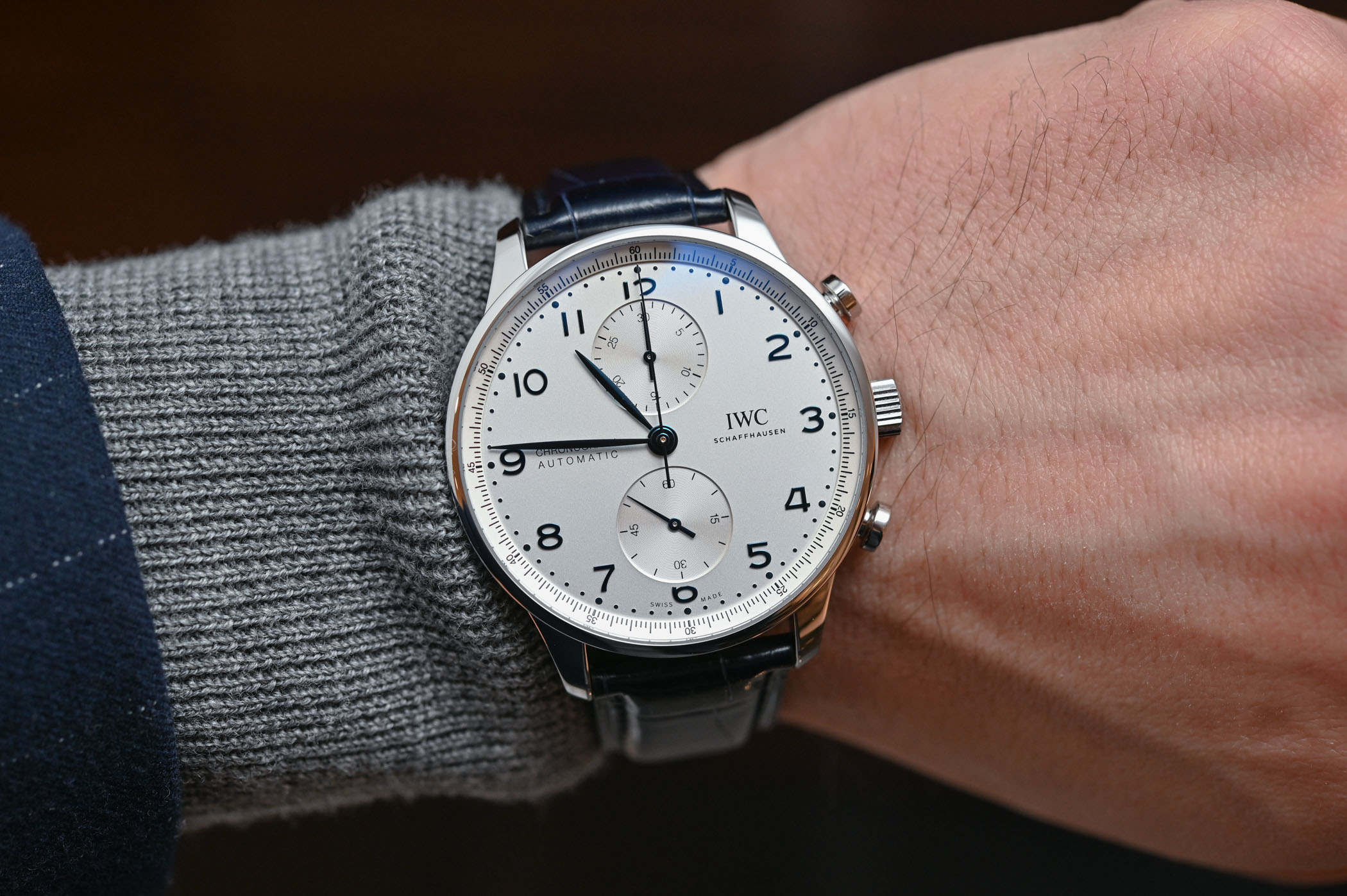
Reminder: why the IWC Portugieser Chronograph matters
Together with the pilot’s watch collection, the Portugieser is certainly the most famous IWC range. Classic, iconic, superbly designed, slightly dressy without being too formal – it’s one of those watches that most enthusiasts will encounter at least once in her/his collecting life. No doubt about it, this watch is a cult, especially the following version, the automatic chronograph.

The original Portugieser is an old watch, designed in 1939 following the request of two Portuguese merchants (named Rodrigues and Teixeira), who wanted to have the precision of IWC’s deck clocks but to be worn on the wrists while sailing. The result is a large wristwatch, powered by a pocket watch movement, with a distinctive design (surprisingly modern, even by today’s standards) and a minimalist approach focused on legibility and precision. Know as reference 325, this watch was in short supply. Only 304 pieces with Calibre 74 were produced and 371 pieces with the evolution of this movement, the Calibre 98 (and its subsequent version, Calibre 982). During the 1970s and 1980s, the watch was sold exclusively on the German market.
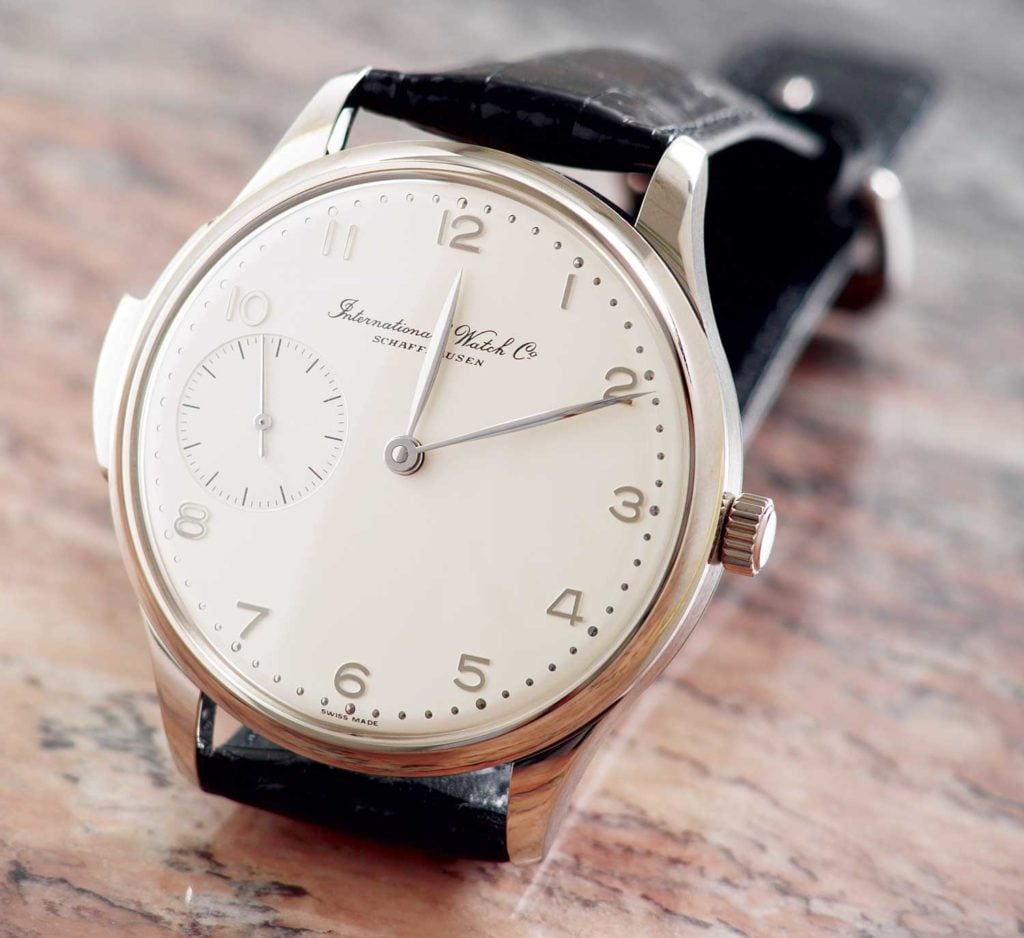
In 1993, the situation changed and the IWC Portugieser made its comeback for the 125th anniversary of the brand with the Jubilee Edition Ref. 5441 – a 42mm watch produced in 1,750 pieces – which was extremely faithful to the original Ref. 325, including a pocket watch-inspired movement, Calibre 9828 (an evolution of the Calibres 98 and 982). However, the true comeback of the IWC Portugieser, as a consistent collection, occurred in 1995 with the introduction of the IWC Portugieser Chronograph Rattrapante Ref. 3712 – a watch that introduced all the modern design elements.
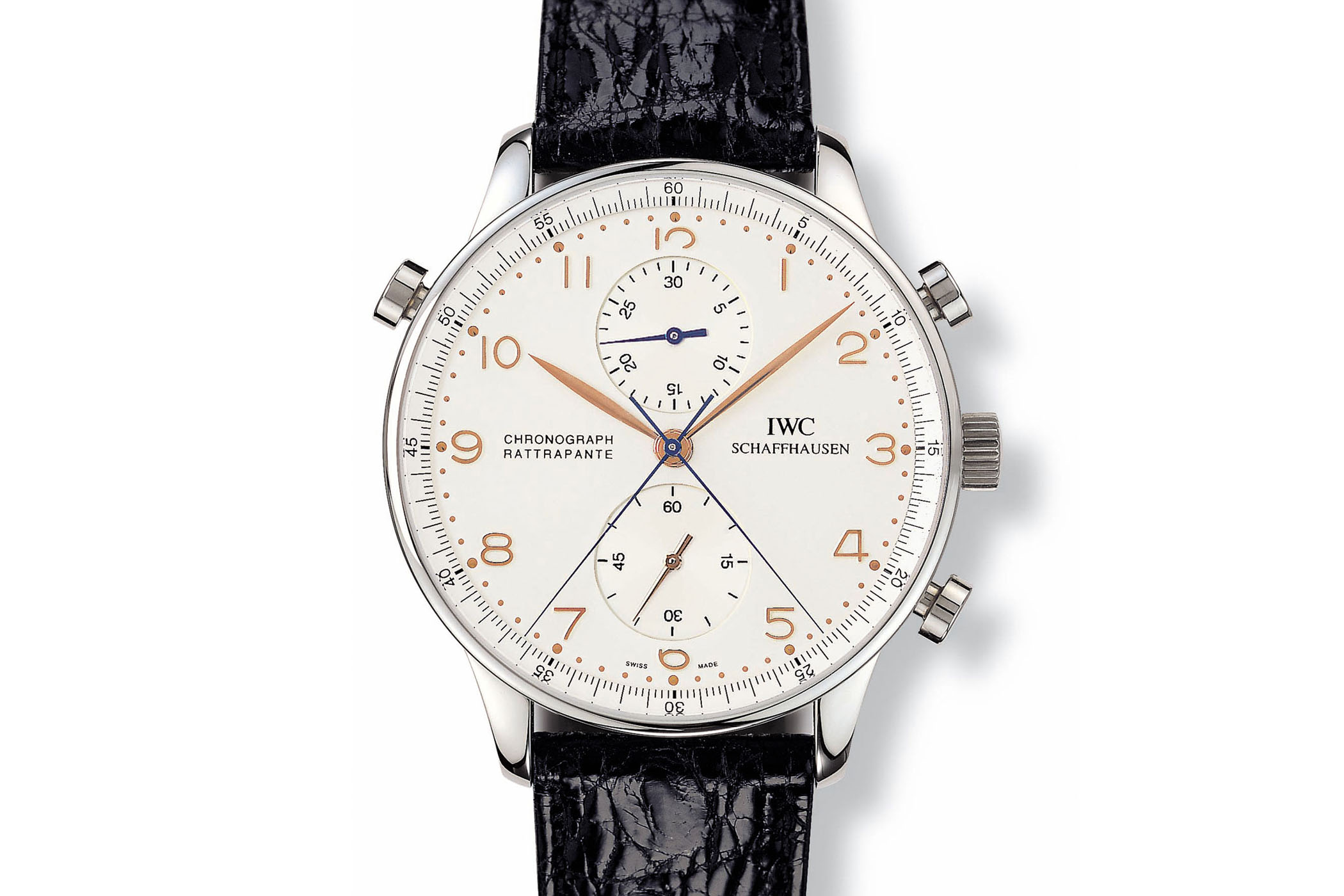
In 1998, three years after the introduction of the Chronograph Rattrapante 3712, IWC launched a simplified model – Ref. IW3714 – a standard chronograph sharing the same design, the same case, the same dial and the same display. The main difference concerned the functions, as the 3714 got rid of the rattrapante function and took an automatic movement onboard. The beauty of this watch lies in its extreme simplicity and the symmetry of its design. Even though it was powered by a Valjoux base, the movement was drastically modified by IWC. Combined with a decent price, it became a commercial success. And one that didn’t change an iota in 22 years of existence – except for the occasional dial variations.
The new IWC Portugieser Chronograph 3716 vs the old 3714
IWC is fully aware of the situation we’ve discussed above. The IWC Portugieser Chronograph is first and foremost a commercial success because of its timeless, classic and very discreet design, but maybe less because of what ticks inside the case. As we mentioned, there was nothing wrong with the old calibre 79350. On the contrary to what has been written, it isn’t “just” a Valjoux movement. It was highly modified by IWC to meet with the brand’s precision standards and with the specific display of the Portugieser (12-hour counter removed, small seconds sub-dial placed at 6 o’clock, date mechanism fully removed, 31 jewels instead of 25). Times have changed since 1988, and with a name like IWC, a “manufacture” movement has somehow become a must-have – this is debatable but commercially, having your own movement seems to add a lot of legitimacy.

For 2020, IWC has decided to devote some attention to one of its most iconic pieces… But how do you update an icon, with the risk of ruining it and making it less attractive than it was? IWC’s answer is simple: you don’t change anything, except what needs to be changed! Visually, with the exception of minor details (and really, minor is an understatement), the new 3716 is just about the same as the 3714. And guess what? This is the best thing the brand could have done.
What doesn’t change…? Basically, everything. The watch retains its design and proportions, its display, its dials, its finishes, its hands, its strap and no new versions have been added to the collection; there are still the same six iterations that were available with the reference 3714, meaning four stainless steel models and two rose gold versions.
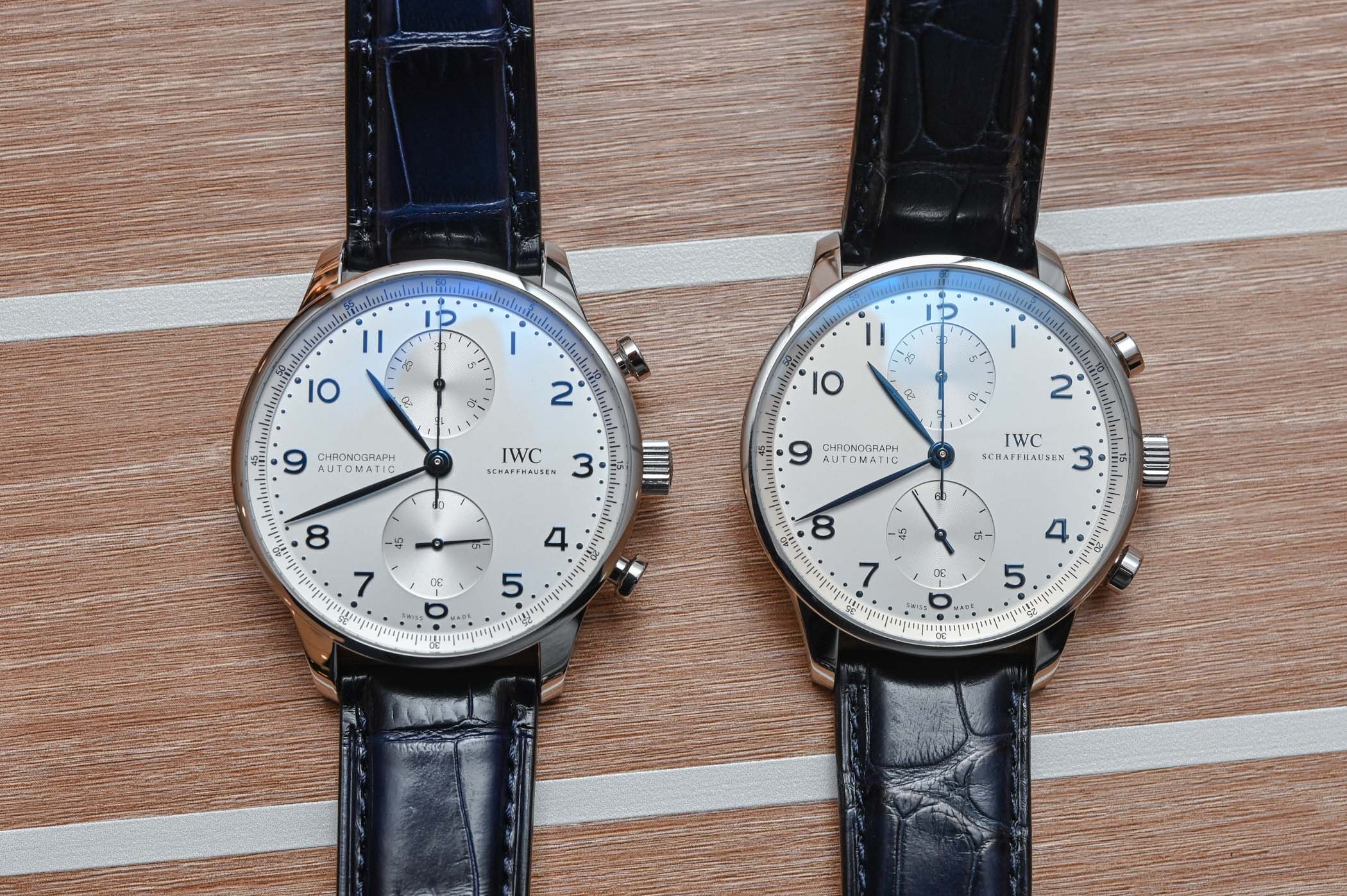
Now, looking in more detail, and besides the obvious change in mechanics, there are a few updates. Let’s start with the case. One of the reasons for the success of the IWC Portugieser Chronograph was its relatively small dimensions. While 43mm and up are not uncommon in the Portugieser collection, this “entry-level” version sticks to a quite compact diameter. On the old 3714, it measured 40.9mm. With its updated calibre, the new model now measures 41mm. Same goes for the height of the case, which is 0.3mm thicker – but only the caseback is thicker, the case itself retains the same profile. In reality, this increase in size is impossible to notice and the watch is still extremely comfortable to wear.
A trained eye will also notice that the pushers are slightly different, with the top section being thinner but a tiny bit larger. The crown doesn’t change and the case has the same finishings, with polished flat surfaces and the ultra-thin bezel, while the casebands are brushed. Still secured to the wrist by an alligator strap (with the exception of watches delivered to California), the main update regarding the habillage concerns the buckle. The IWC Portugieser Chronograph 3716 is now equipped with a triple folding buckle that is thinner and smaller than the previously large and relatively thick deployant buckle. This allows the buckle to always be centred allowing an increased comfort for smaller wrists.

The best decision IWC made was to NOT change anything regarding the design of the Portugieser Chronograph.
Looking at the dial, here again, it is a tough game of “spot the difference”. Easily recognizable thanks to its symmetrical and minimalistic (at least for a chronograph) display, the new Portugieser Chronograph 3716 retains all of the winning elements. It means beautifully shaped Arabic numerals, dots for the minutes, leaf-shaped hands and a no-date display. The sub-counters, with the 30-minute totalizer at 12 o’clock and the small seconds at 6 o’clock, have been kept too, despite the new movement – and so have their dimensions and the space between the sub-counters and the central hands. The only noticeable difference is the “IWC Schaffhausen” logo, with a more modern font and a slightly smaller size. Also, it appears that the silver colour of the old ref. 3714 appears a bit warmer than the colder colour of the new ref. 3716 – this might be caused by the ageing process though. In short, with the exception of the logo, nothing has changed.
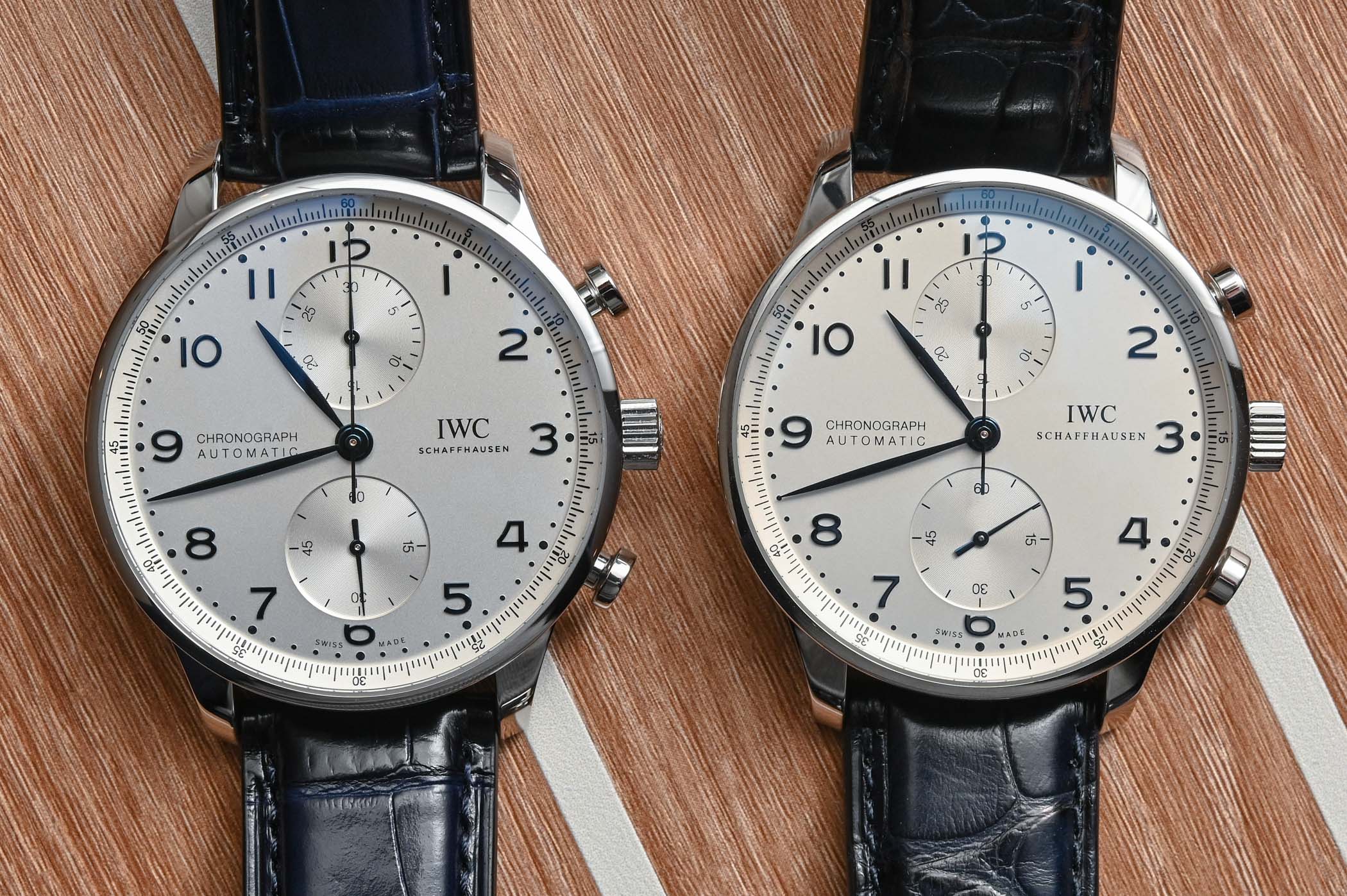
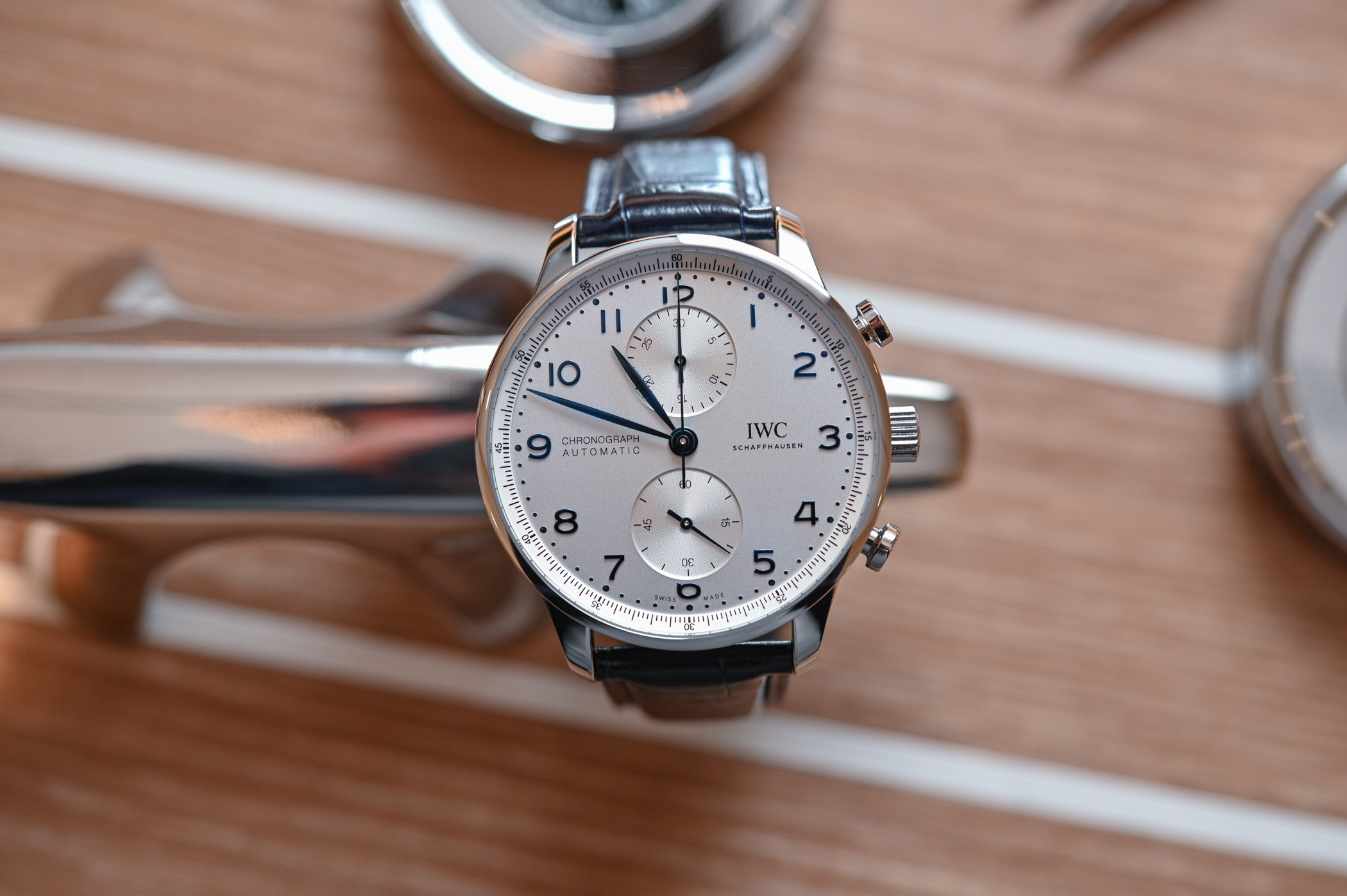
As we said, it really is about details. Beyond the habillage of this watch is where IWC takes a bit step forward.
Main update: the in-house calibre of the 3716
Back in 1998, mechanical watches were slowly being resurrected. Back then, the concept of having an automatic movement was already enough to tickle the interest of a watch enthusiast. Which is why, in order to keep the watch at an attainable level, IWC chose a reliable base movement to equip the 3714, and then updated it to its own needs. Yet, we’re not in the 1990s anymore and the general knowledge of the average watch enthusiast has changed dramatically. Nowadays, a watch needs more than an externally sourced movement to be attractive and to be regarded as part of the “high-end” club. An in-house movement is seen as a massive plus.
IWC has long been manufacturing its own movements in-house, and chronographs have been a core product for the brand. Yet, until recently, in-house chronographs at IWC meant the calibre 89xxx, a complex, powerful and large movement fitted in watches with 5-digit price tags. However, with the introduction of the new Ingenieur collection in 2016, the brand decided to add another in-house chronograph movement to its portfolio, this time, however, with simpler mechanics and more restrained dimensions – the 69xxx family that we’ve explored in detail here.
As fully autonomous manufacture with a complete range of in-house movements, suitable for all its watches, from entry-level 3-handers to ultra-complex tourbillon QPs, the idea was simple for IWC. This new 69xxx series of movements are no-nonsense, reliable, robust calibres meant to equip simpler watches. It gets rid of certain IWC signature elements, such as the Pellaton winding system (even though a click system close to the Pellaton winding system is fitted). Also, and even though developed, designed and manufactured at IWC in Schaffhausen or by Richemont Group-owned companies, the movement is deliberately close in architecture to a 7750, in order to make it easily adaptable with existing models – the new 3716 is the perfect example of this soft transition.
However, the movement found in this IWC Portugieser Chronograph 3716, the calibre 69355, is certainly a great improvement compared to the old 7750. First of all, it is far better looking and can now be proudly shown under a sapphire caseback. Second, it relies on a column wheel for the start/stop/reset operations, making the pushers far smoother to use than the old 3714. Finally, the power reserve goes up from 44h to now 46h – minimal, but still an improvement.
Thoughts
Let’s get straight to the point: if you didn’t like the previous versions of IWC Portugieser Chronograph, you’re not going to like the new 3716… However, if you’ve always liked the look of the 3714, the new version is simply a better watch. No debate, period!
This new version of the IWC Portugieser Chronograph might be the smartest launch of the brand in recent years, for the main reason that is hasn’t changed anything to do with the design and has only improved what needed to be improved. IWC has kept its 22-year-old icon visually intact, so the owners of the previous model won’t feel like they’re wearing an “outdated” watch. All the beautiful elements are there, the proportions are almost identical and even the colours offered are the same. We don’t often see brands deciding not to alter a watch… and that makes this new 3716 a very mature, well-thought product with great added value for the consumer.
Indeed, for a very reasonable increase of EUR 250, you’ll now have an in-house movement that is visible under a sapphire crystal. And all the rest is about having a timeless watch that won’t go out of fashion soon.
Price, models and availability
The new IWC Portugieser Chronograph 3716 is available in six versions, which are the same as the previous versions available with the ref. 3714:
- IW371604 – steel, silver dial, gold-plated hands and appliqués, black alligator strap
- IW371605 – steel, silver-plated dial, blue hands and appliqués, black alligator leather strap
- IW371606 – steel, blue dial, rhodium-plated hands and appliqués, black leather strap
- IW371609 – steel, black dial, rhodium-plated hands and appliqués, black alligator strap
- IW371610 – 18k 5N rose gold, slate-coloured dial, gold plated hands, 18k gold appliqués, black alligator strap
- IW371611 – 18k 5N rose gold, silver-plated dial, gold-plated hands, 18k gold appliqués, brown alligator leather strap
The new IWC Portugieser Chronograph 3716 is now available (February 2020) at IWC boutiques, on the brand’s webshop and at official retailers. It will be priced at EUR 7,850 or CHF 8,200 in stainless steel and EUR 17,600 or CHF 18,200 in 18k rose gold. More details at www.iwc.com.

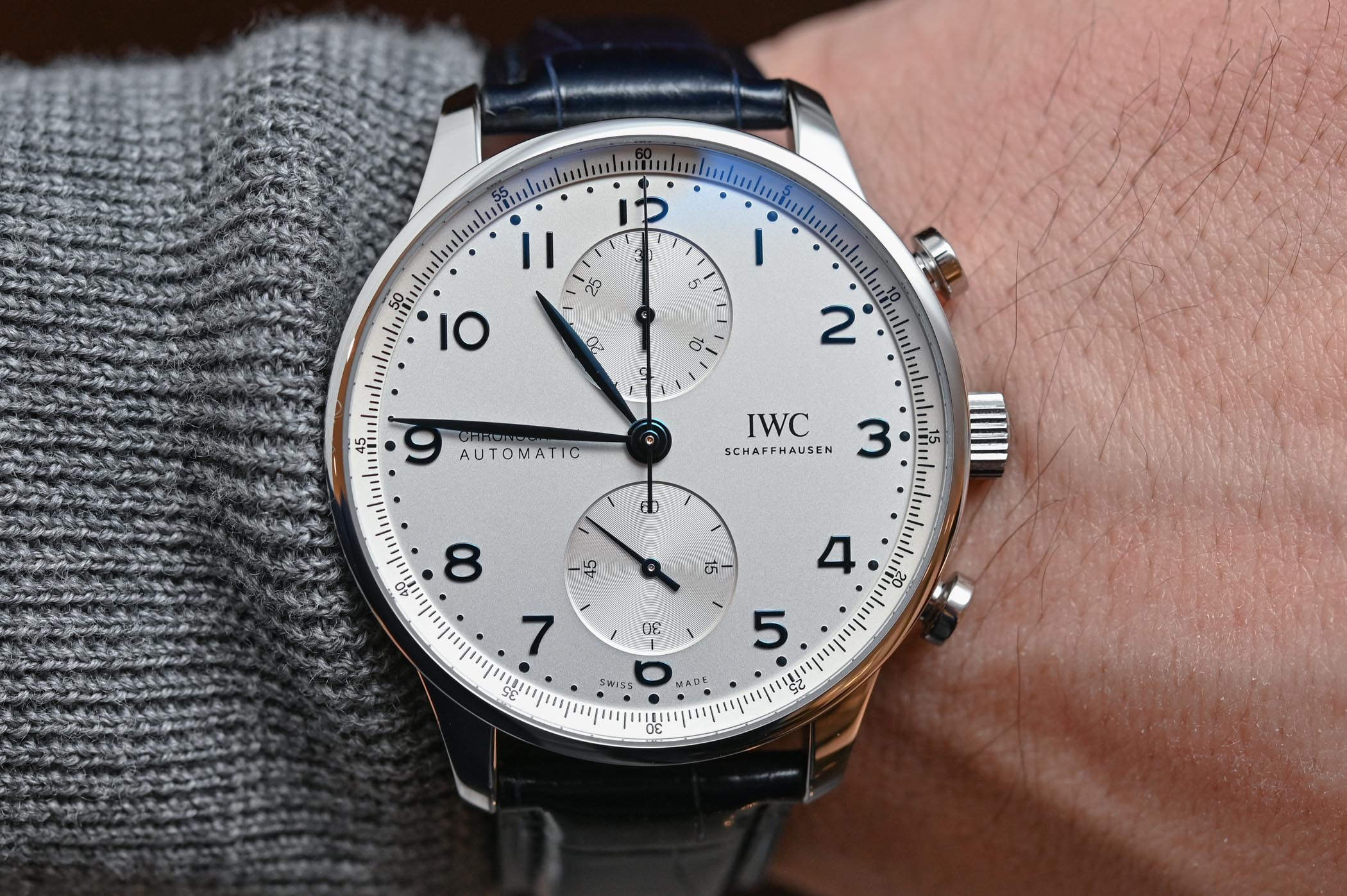
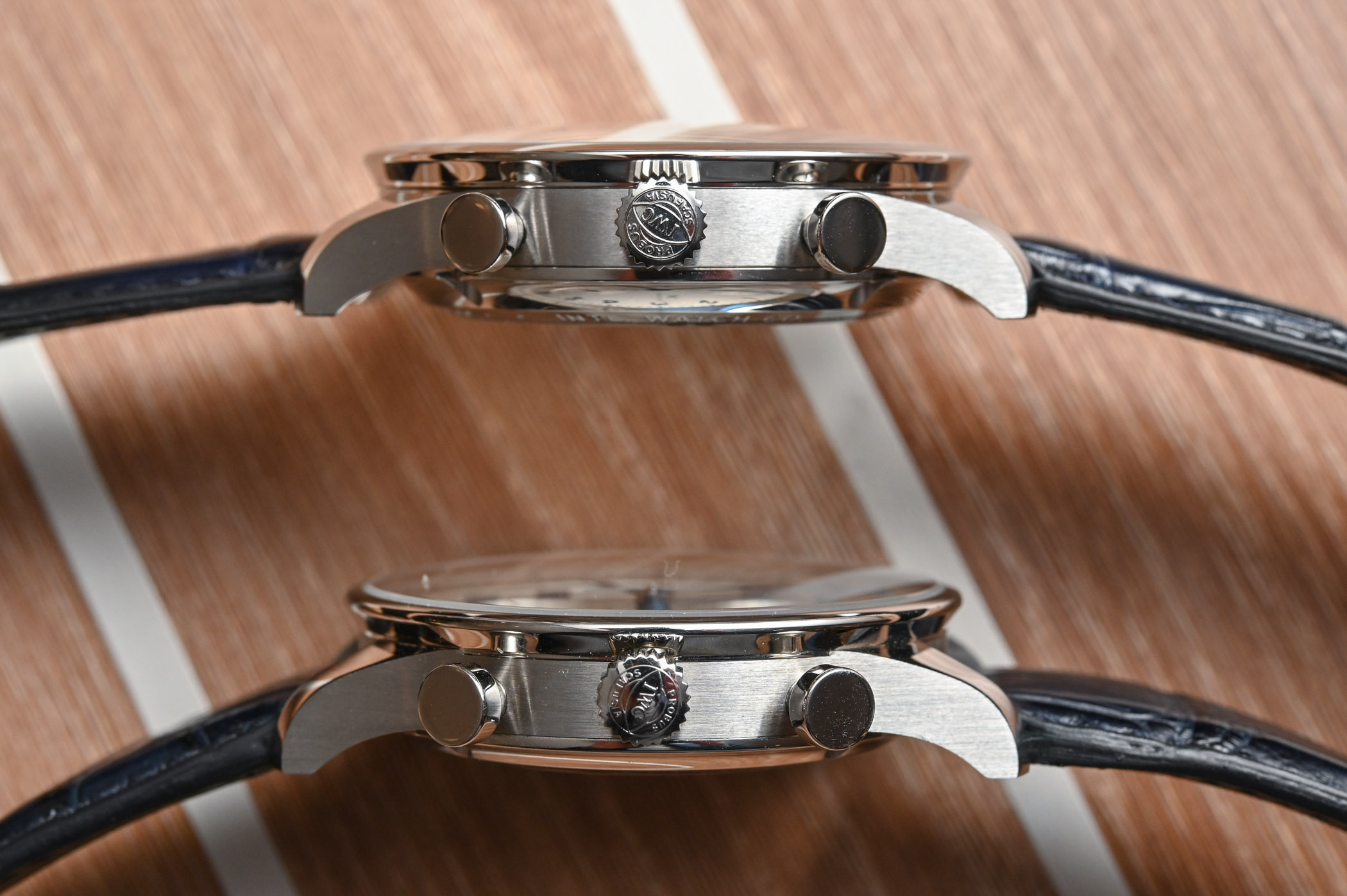
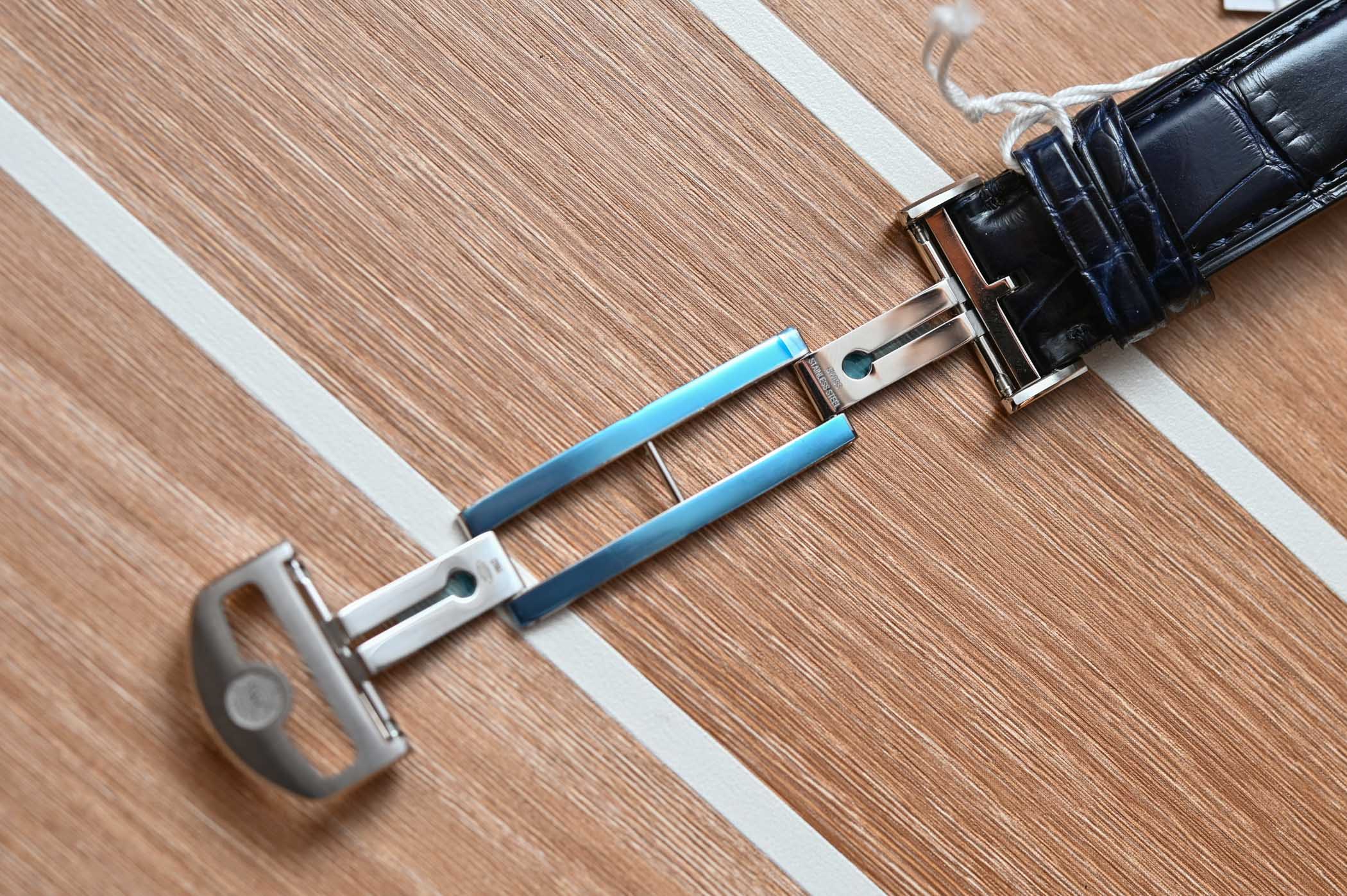
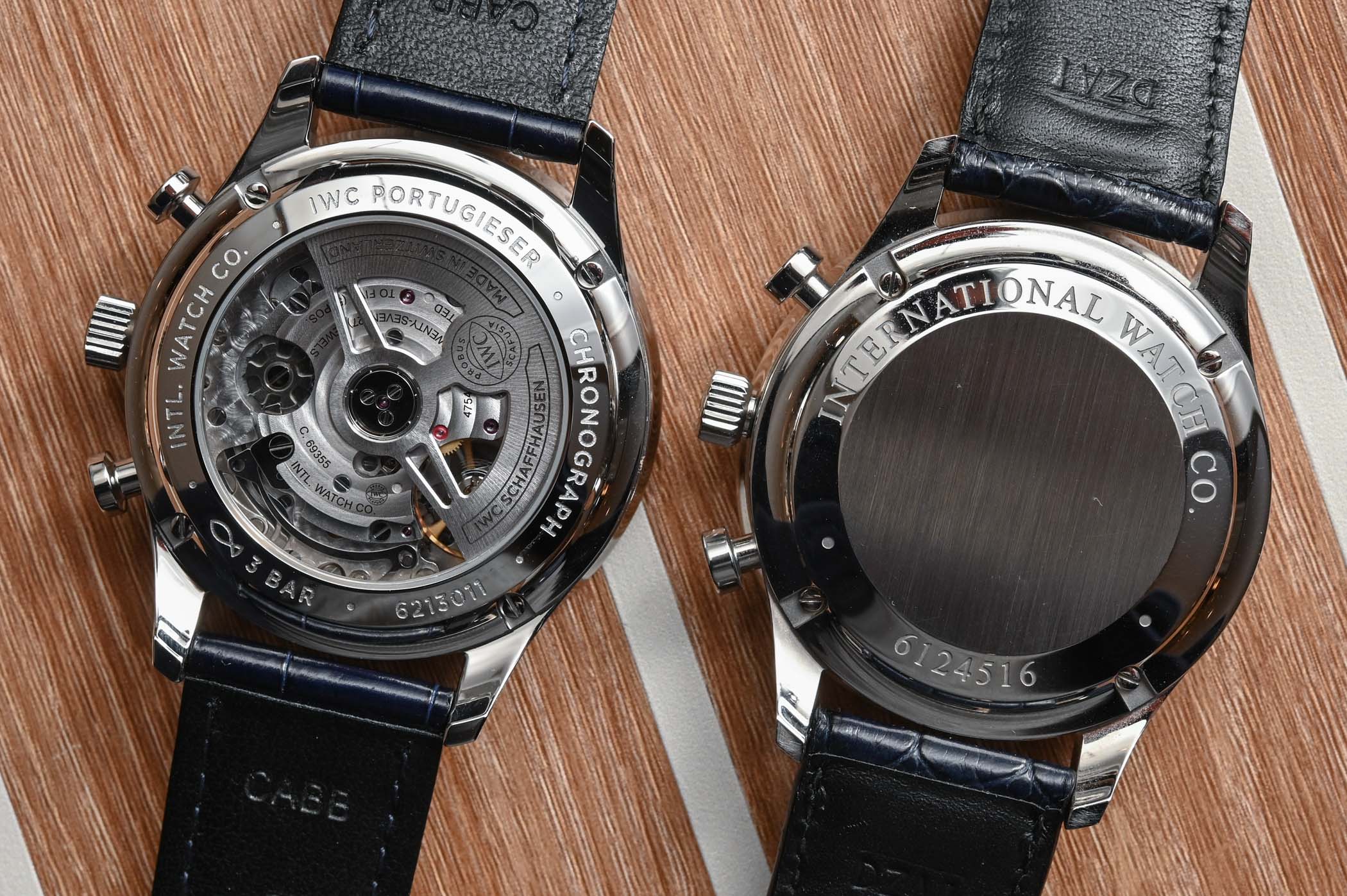
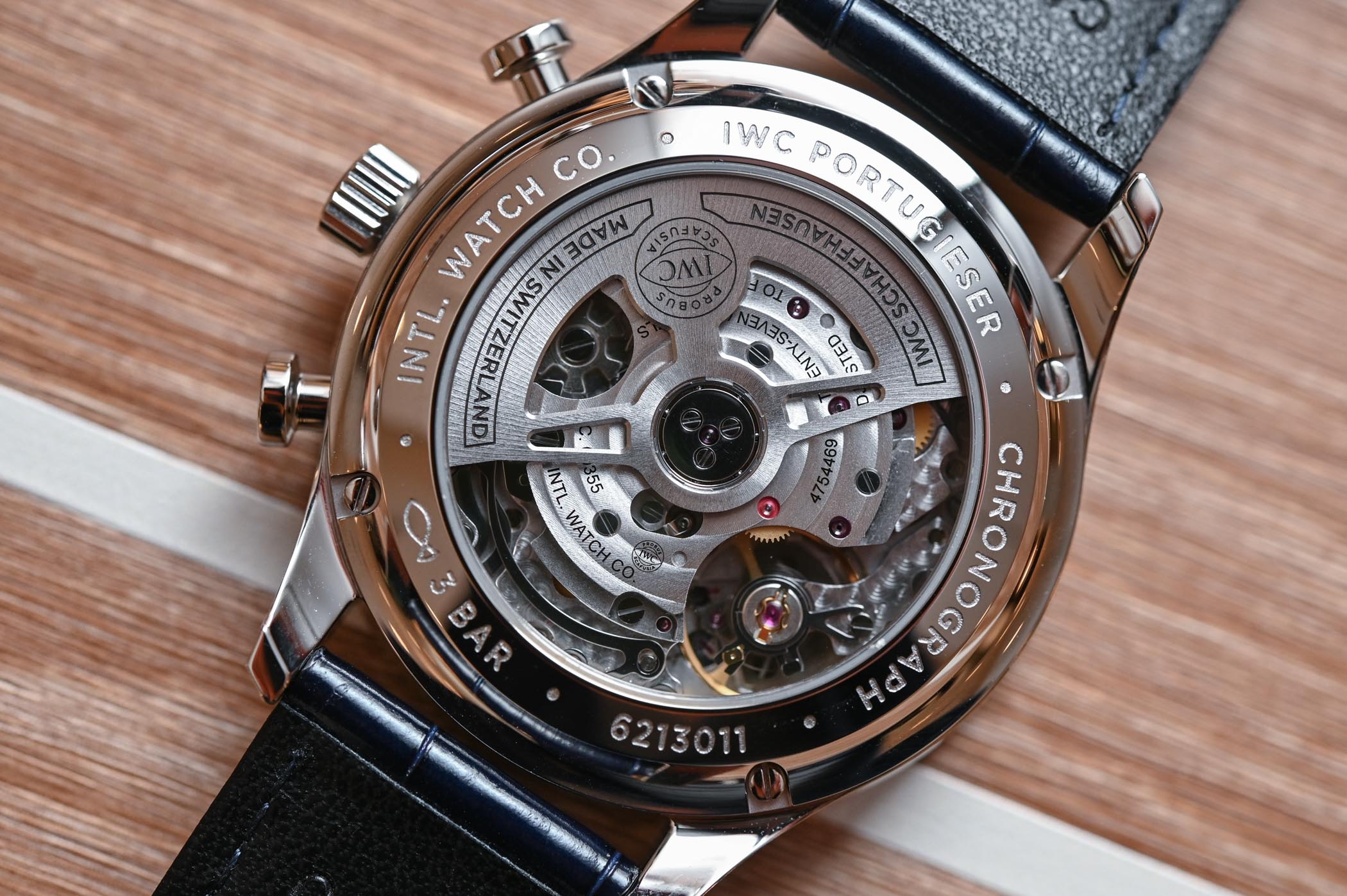
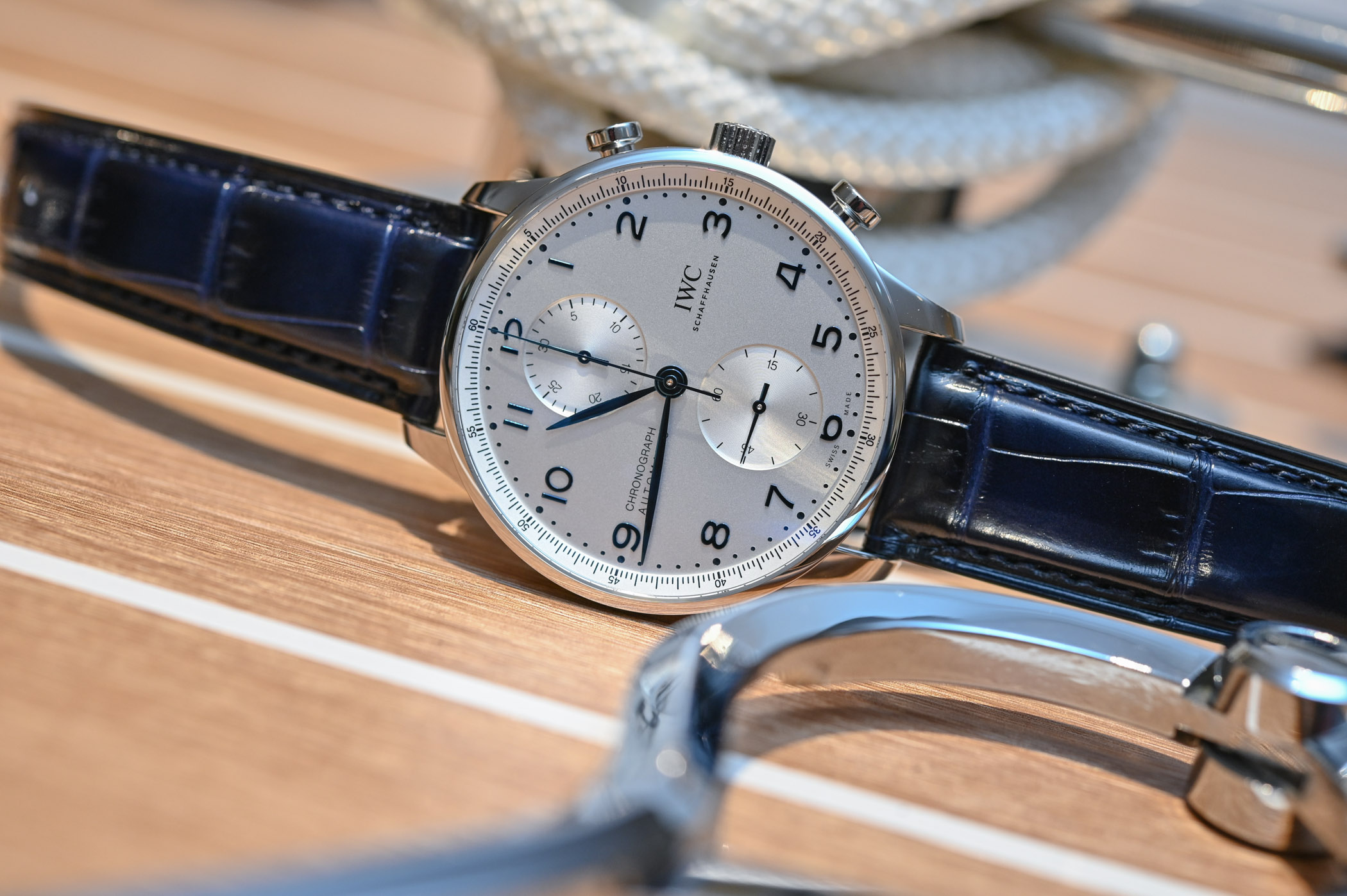
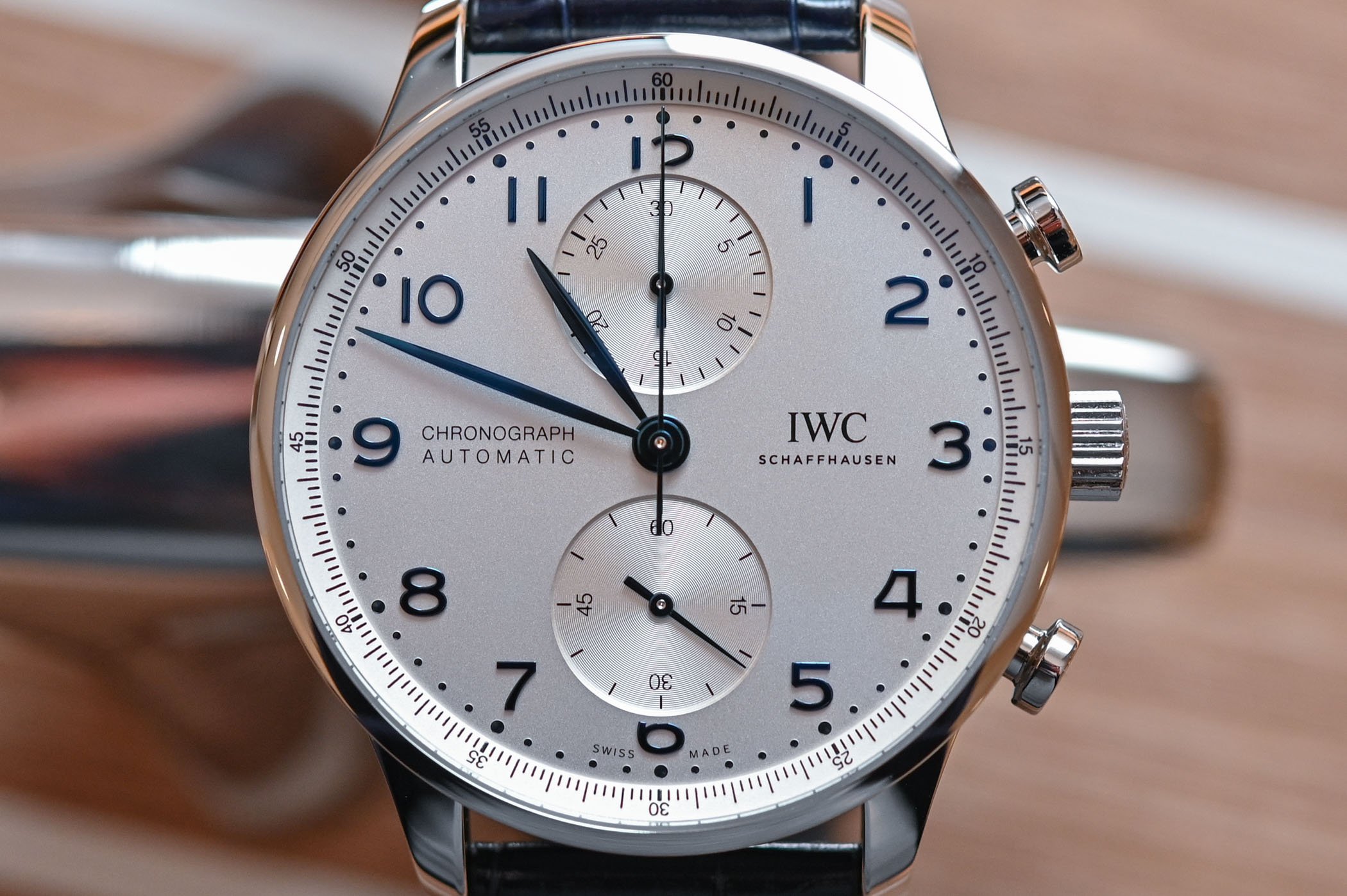

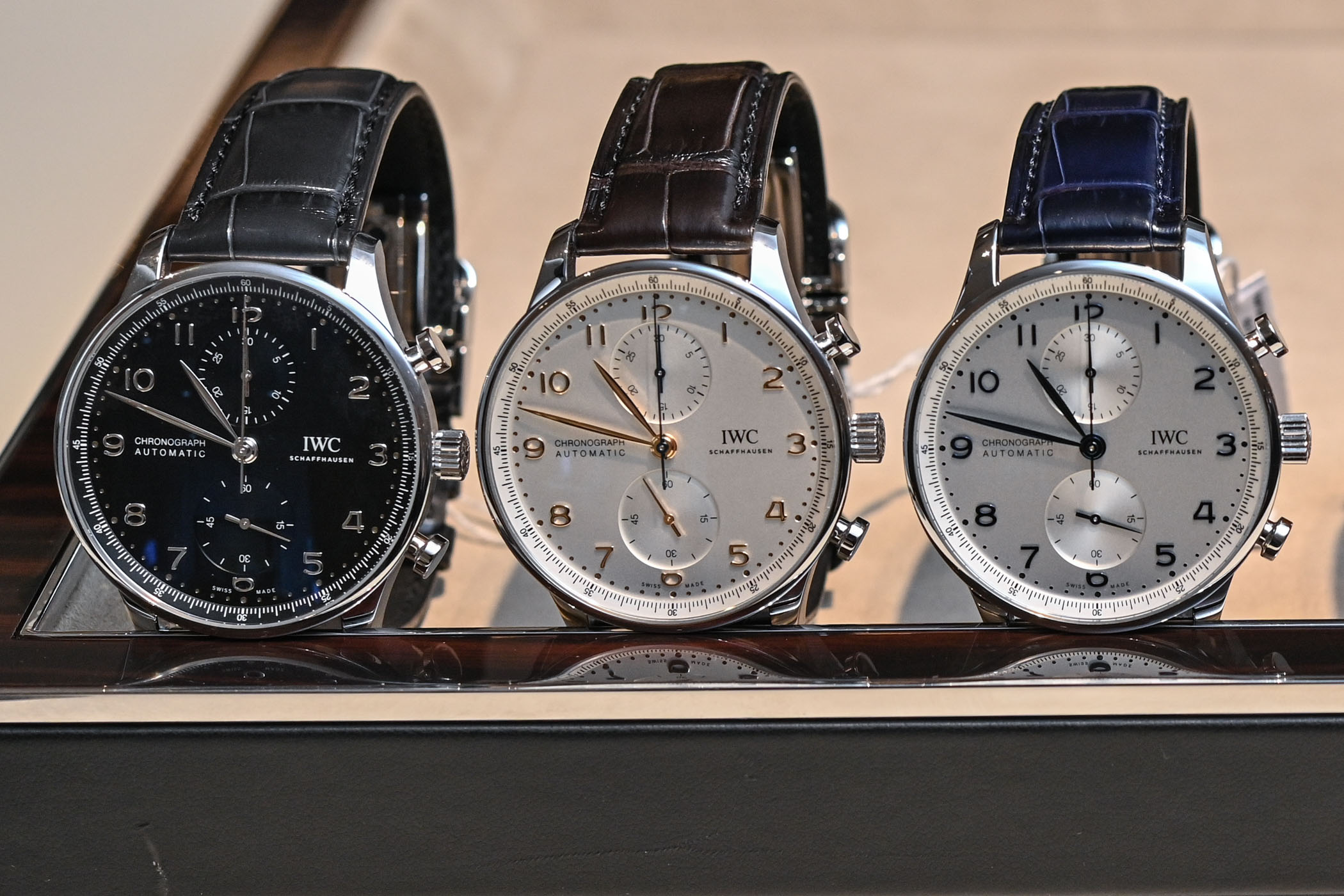
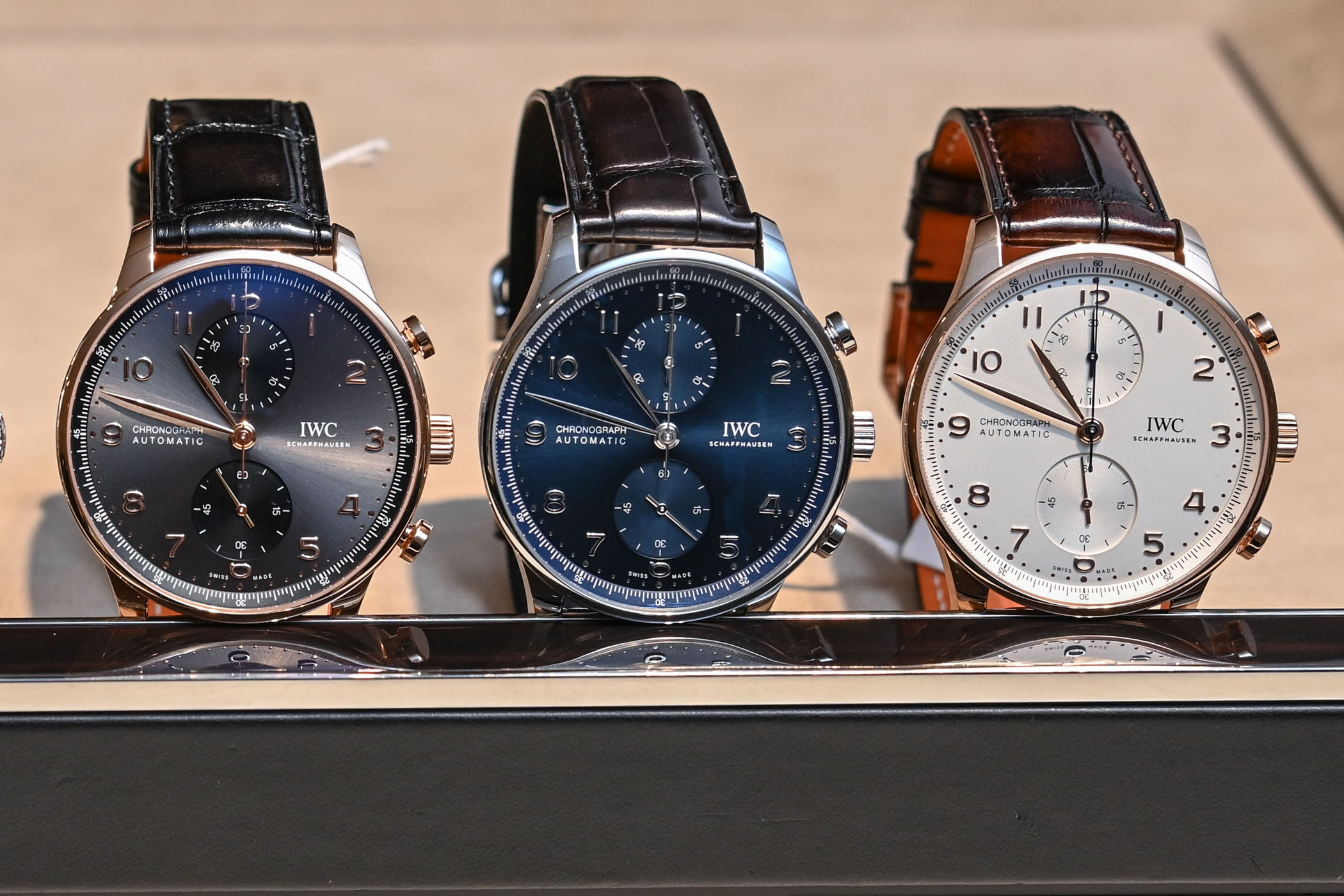



5 responses
I really like the ‘Portugieser’ and have been tempted to get one in a long time. Is now the right moment to do so? Not sure …
I just did a quick search on well-known online portal. Apparently you can get a used 3712 (the one with the ratrappante mechanism) for EUR 5-7k. If that’s true, what’s the point of getting the new ref 3716 for EUR 7,8k … ? Especially if one takes into account that a 3716 bought at retail will most likely devalue, whereas the 3712 will probably hold or even increase value.
Value-retention potential apart, I personally find a 7750-based ratrappante more interesting than the movement contained in the new ref. 3716. From what I can tell it’s a nice movement, but is not pushing the envelope in way that, for example, Omega is doing with their chronos …
Great read. Does the 3716 still have the rotor wobble?
@Stephen McArthur – not as much as the old 3714 with the Valjoux movement.
Thanks. I will check it out in person. I feel a new purchase coming along
Would you pay the difference and exchange your 3714 for the new 3716? Worthy?